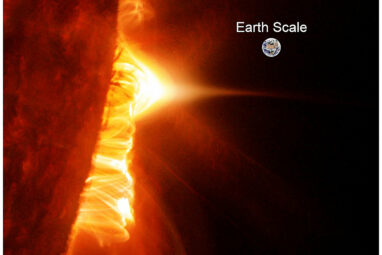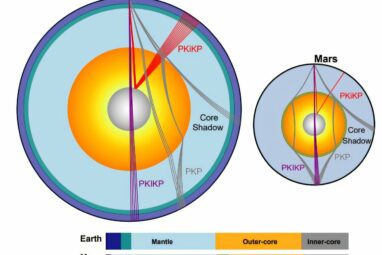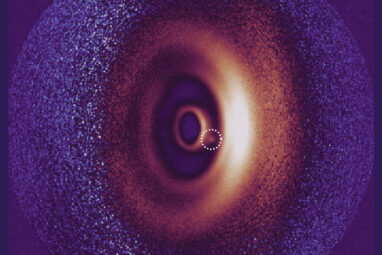New research from the University of St Andrews has proposed that particles in solar flares are 6.5 times hotter than...
Scientists revealed Wednesday that Mars’ innermost core appears to be a solid hunk of metal just like Earth’s. The Chinese-led...
Jupiter hosts the brightest and most spectacular auroras in the solar system. Near its poles, these shimmering lights offer a...
In a distant galaxy called Makani, particles of dust were warmed by the light of newborn stars before being flung...
The Sun will someday die. This will happen when it runs out of hydrogen fuel in its core and can...
Clues about how worlds like Earth may have formed have been found buried at the heart of a spectacular “cosmic...
Scientists have devised a new method for mapping the spottiness of distant stars by using observations from NASA missions of...
An international team of astronomers, co-led by researchers at the University of Galway, has made the unexpected discovery of a...
Astronomers at Leiden University have detected rare isotopes of carbon and oxygen in our neighboring stars for the first time,...
New results from OSIRIS-REx, NASA’s first asteroid sample return mission, reveals why some gray asteroids reflect light at different wavelengths,...
For decades, astronomers have wondered what the very first stars in the universe were like. These stars formed new chemical...
Supernovae appear to our eyes—and to astronomical instruments—as brilliant flashes that flare up in the sky without warning, in places...





